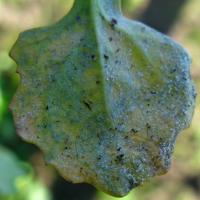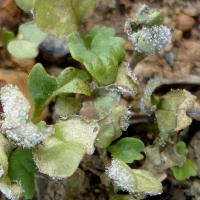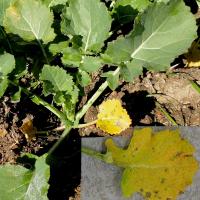Diagnosing downy mildew in canola
A fungal disease infecting foliage of canola, it mainly affects seedlings and is rarely found beyond the rosette stage. It is favoured by cool wet conditions and crops normally grow away from it with the onset of warmer weather.
What to look for
- Smaller diseased young plants that are more common in wet weather and moister areas.
Paddock
- Yellow areas on the upper leaf surface is the first symptom. These can be seen on young seedlings when cotyledons or first true leaves are present.
- A white powdery fungal growth can be seen on the underside of the leaf beneath these spots.
- Infected cotyledons die prematurely.
- As the disease develops, individual spots join to form large irregularly shaped blotches that die and cause a large part of the leaf to dry out.
- The upper surface of the leaf then becomes yellow-red. Severely affected plants may be stunted.
- Rapidly growing plants grow away from the disease as the weather warms up in spring.
Plant
Where did it come from?

Contaminated soil

Contaminated seed
- Downy mildew is both soil and seed-borne and can persist in the soil for a long time.
- Infection is favoured by cool wet weather and under ideal conditions, new infections can develop in as little as 3 to 4 days.
Management strategies

Rotation
- Downy mildew does not usually affect yield so control measures are not generally warranted unless plant densities are severely reduced on a regular basis.
- Crop rotation and the control of cruciferous weeds between canola crops can reduce disease severity.
See also
Where to go for expert help
Page last updated: Thursday, 16 April 2015 - 1:15pm





